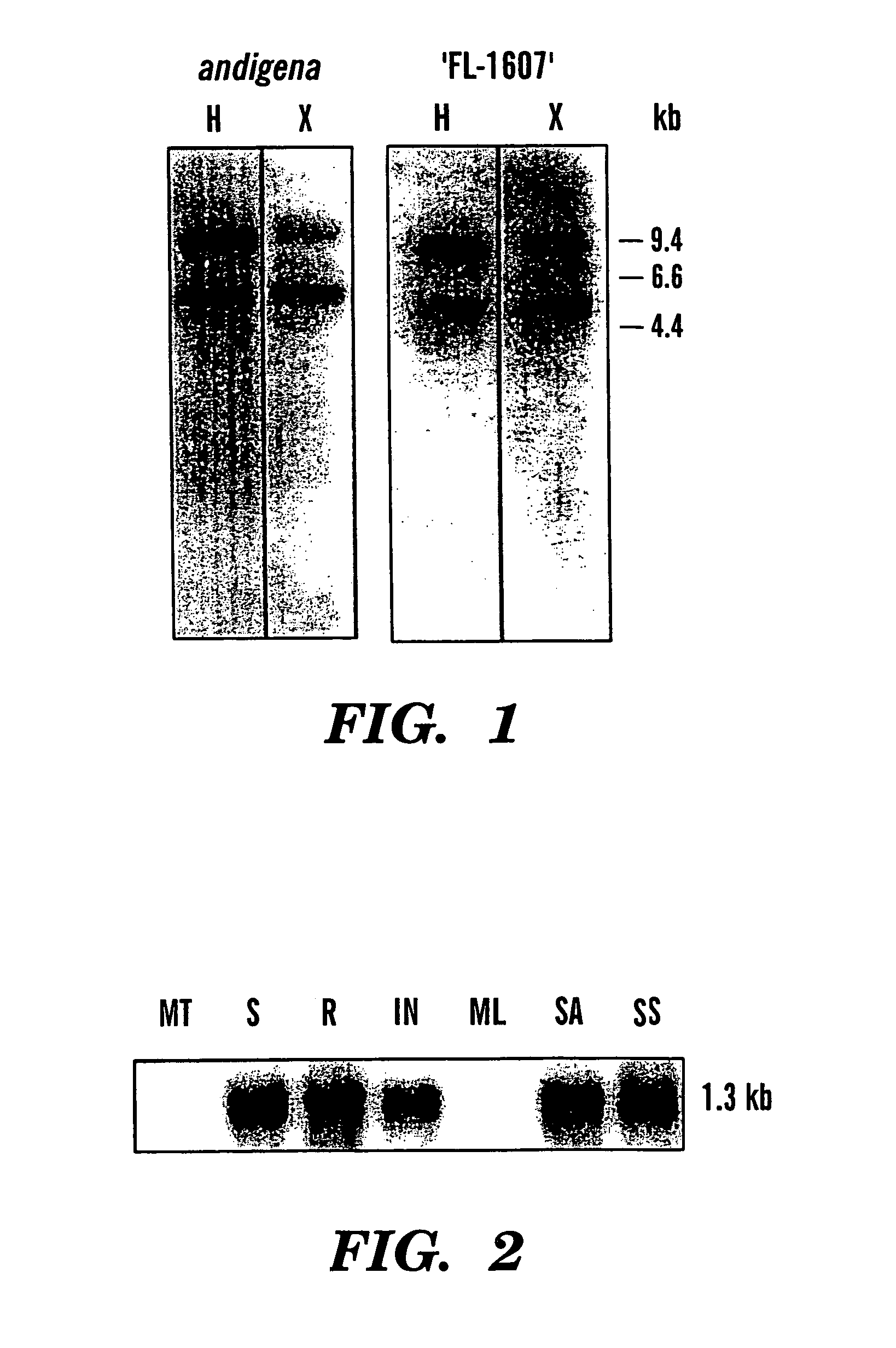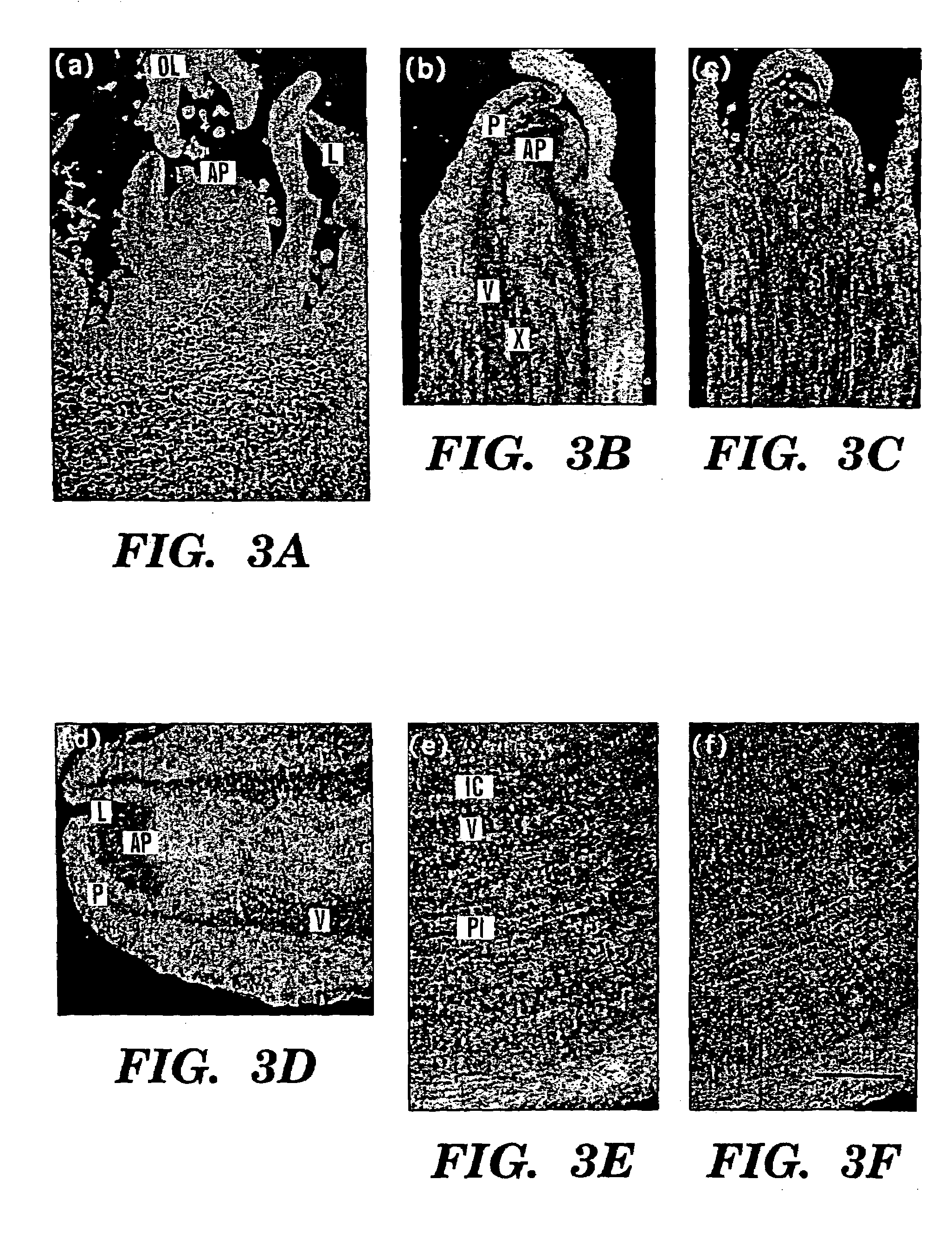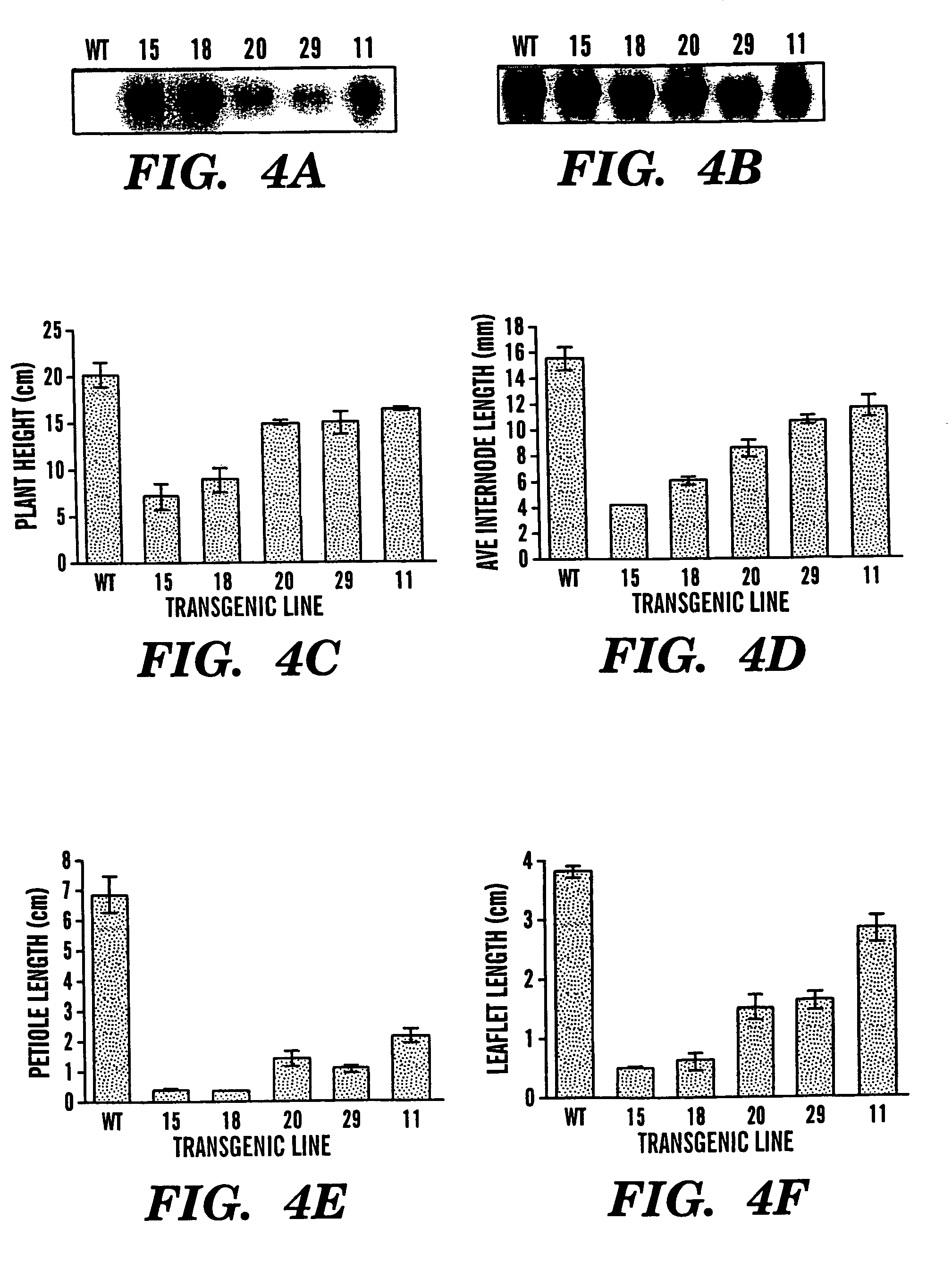Mobile RNA acts as a signal to regulate plant growth and development
- Summary
- Abstract
- Description
- Claims
- Application Information
AI Technical Summary
Benefits of technology
Problems solved by technology
Method used
Image
Examples
example 1
Amplification of Potato Homeobox Fragment for Use as Probe
[0174]Two primers, Primer 1 (5′-AAGAAGAAGAAGAAAGGGAA) (SEQ ID NO:18) and Primer 2 (5′-ATGAACCAGTTGTTGAT) (SEQ ID NO:19) were designed based on comparison of the homeobox regions of five class I homeobox genes (KN1, KNAT1, KNAT2, OSH1, and SBH1) to correspond to the most highly conserved portions of the homeobox, and were synthesized at the DNA Synthesis Facility at Iowa State University. Template DNA was prepared from a mass in vivo excision of a 4-day axillary bud tuber λZAP®II cDNA library (Stratagene, La Jolla, Calif.) from potato cv. Superior. The potato homeobox fragment was amplified using an annealing temperature of 45° C. and cloned into the pCR2.1 vector of the TA Cloning® Kit (Invitrogen, Carlsbad, Calif.).
example 2
Library Screening and Sequence Analysis
[0175]The early tuberization stage library was constructed as described in Kang et al., “A Novel MADS-box Gene of Potato (Solanum tuberosum L.) Expressed During the Early Stages of Tuberization,”Plant Mol. Biol. 31: 379-386 (1996), which is hereby incorporated by reference in its entirety. Screening of 400,000 pfu was accomplished using 100 ng of 32P-labeled PCR-generated probe in 50% formamide (50% deionized formamide, 6×SSC, 3.4×Denhardt's solution, 25 mM sodium phosphate buffer, pH 7.0, 120 μg / ml denatured salmon sperm DNA, 0.4% SDS) at 42° C. for 48 hours. Membranes were washed with 2×SSC / 0.1% SDS, at 25° C. for 5 minutes; then twice with 2×SSPE / 0.1% SDS, at 65° C. for 20 minutes.
[0176]POTH1 was sequenced at the Nucleic Acid Sequencing Facility at Iowa State University. Sequence analyses performed included BLAST (Altschul et al., “Basic Local Alignment Search Tool,”J. Mol. Biol. 215:403-410 (1990), which is hereby incorporated by reference ...
example 3
RNA Isolation and Northern Blot Analysis
[0177]Total RNA was isolated (Dix et al., “In vivo Transcriptional Products of the Chloroplast DNA of Euglena gracilis,” Curr. Genet. 7:265-273 (1983), which is hereby incorporated by reference in its entirety) from potato (Solanum tuberosum L.) plants grown in the greenhouse at 20 to 25° C. under 16 hours of light. Total RNA was enriched for poly (A)+ RNA by separation over an oligo-dT column and northern gel electrophoresis was performed using methyl mercury as a denaturant. Ethidium bromide staining under UV light was used to ascertain equal gel loading and efficient transfer to nylon membranes. The Genius™ nonradioactive nucleic acid labeling and detection system (Roche Biochemicals, Indianapolis, Ind.) was used. Fifteen ng / ml of digoxygenin-UTP-labeled antisense RNA probe in 50% formamide was hybridized to filters at 55° C. overnight. Membranes were washed twice for 5 minutes in 2×SSC, 0.1% SDS at 25° C., and then washed twice for 15 minu...
PUM
| Property | Measurement | Unit |
|---|---|---|
| Temperature | aaaaa | aaaaa |
| Fraction | aaaaa | aaaaa |
| Mass | aaaaa | aaaaa |
Abstract
Description
Claims
Application Information
 Login to View More
Login to View More - R&D
- Intellectual Property
- Life Sciences
- Materials
- Tech Scout
- Unparalleled Data Quality
- Higher Quality Content
- 60% Fewer Hallucinations
Browse by: Latest US Patents, China's latest patents, Technical Efficacy Thesaurus, Application Domain, Technology Topic, Popular Technical Reports.
© 2025 PatSnap. All rights reserved.Legal|Privacy policy|Modern Slavery Act Transparency Statement|Sitemap|About US| Contact US: help@patsnap.com



